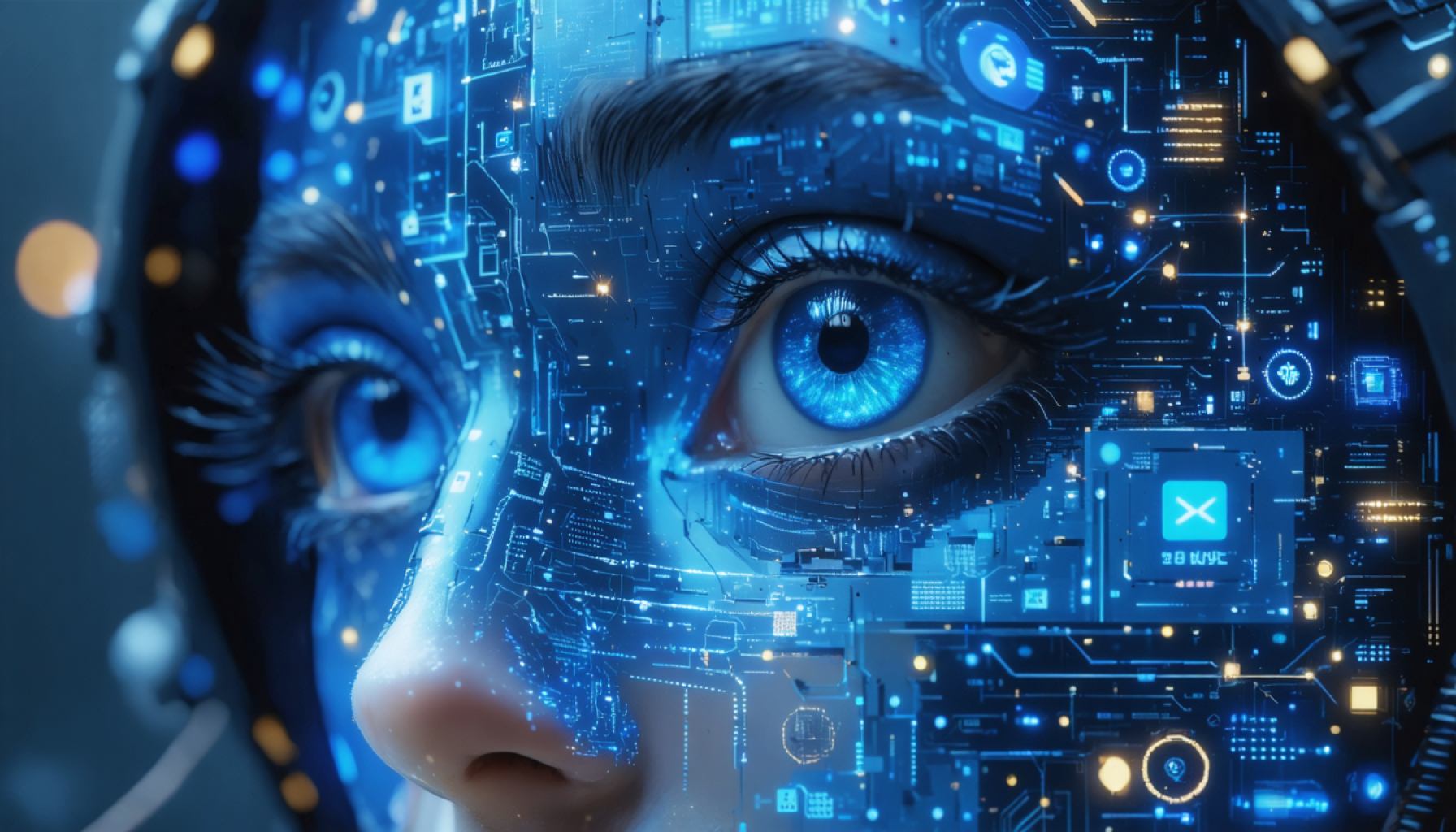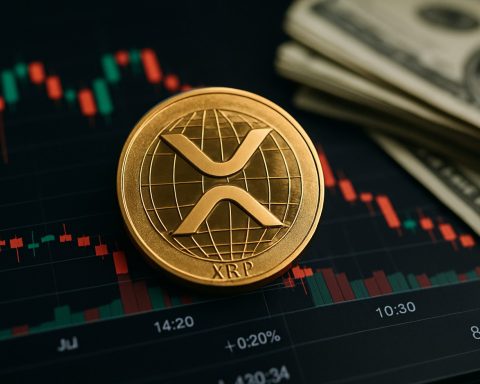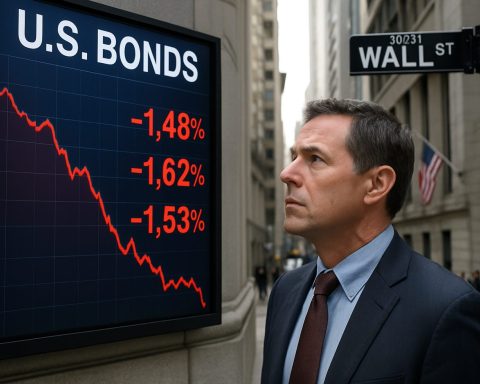- AI-generated art prompts a crisis of authenticity, blurring lines between homage and imitation.
- Generative AI challenges the notion of authorship, threatening the creative industries’ integrity.
- Blockchain technology offers a solution by ensuring art’s provenance through cryptographic methods.
- Cryptographically anchored content promises transparency and fairness in the creative economy.
- Artists can use immutable blockchain records to protect and authenticate their work uniquely.
- This shift supports a future where creativity is both validated and celebrated, not just protected.
A swirl of pastel hues now floods the liminal space of our social feeds, offering ethereal whispers of Miyazaki’s dreamscapes. But these enchanting creations, though mesmerizing, carry an unsettling truth: they are crafted not by the hand of Hayao Miyazaki but by artificial intelligences that indiscriminately borrow from unlicensed archives.
Here lies the heart of the matter—a profound crisis of authenticity. In a world rapidly reshaped by generative AI, the origins of our cultural artifacts grow hazier by the day. The flattening of creativity and the erosion of authorship have spirited away the very soul of artistic endeavor. What remains is an echo of the genuine, glossed over by digital craftsmanship that blurs the line between homage and imposter.
The formidable chaos unleashed by this new wave of AI-generated content casts a long shadow over the creative industries. Imagine, for instance, the fate of Philip Banks, whose clever canine creation, Chill Guy, transformed into a viral meme and a lucrative token—yet without his blessing. Hacked accounts and forged licenses crashed this castle in the clouds, a phenomenon repeating across artistic realms worldwide.
Amidst this quickly evolving landscape, blockchain technology emerges as a beacon for creators, offering a refuge for originality and integrity. Beyond its cryptic jargons lie real solutions: cryptographically anchored content that ensures every piece of art claims its rightful lineage. This digital ledger doesn’t just promise authenticity; it enforces it by embedding the essence of provenance at the core of each creation.
By harnessing these tools, artists can now inscribe their work upon an immutable canvas–a record that captures every brushstroke, every note, every word as a unique fingerprint. This isn’t about erecting new barriers but about nurturing a creative ecosystem that prizes transparency and fairness, fostering an environment that empowers artists rather than erodes their contributions.
Without this structural shift towards verifiable authenticity, the integrity of the creative economy will crumble, leaving us adrift in a sea of diluted artifice. As calls increase for more than just reactionary litigation, the answer beckons through the blockchain’s promise of clarity and accountability.
A free and vibrant cultural future, one where the spirit of today’s Miyazakis and future pioneers can flourish, hinges on the systems we choose to build. This isn’t merely a technological shift; it’s a philosophical necessity—a call to embed trust and truth into the very fabric of our digital tapestry.
The path forward is dotted with the promise of a more vibrant, trustworthy internet, where creativity isn’t just protected, but celebrated. This odyssey doesn’t end with outrage—it begins with the anchoring force of blockchain provenance, ensuring that our digital renaissance is both genuine and enduring.
Can Blockchain Save Art in the Age of AI? A Deep Dive into Authenticity and the Future of Creativity
Understanding the Crisis of Authenticity in AI-Generated Art
The advent of artificial intelligence (AI) in art has opened a new chapter of creative possibilities, yet it brings with it a tumultuous crisis of authenticity. As AI-facilitated creations inundate our feeds, the true origins of these works become murky. A prime example is the emergence of art inspired by the surreal aesthetic of Hayao Miyazaki, yet crafted entirely by AI, raising crucial ethical questions about the ownership and integrity of art.
The Impact of AI on Creative Industries
The rise of AI-generated content has sent shockwaves through creative industries. Artists like Philip Banks, whose original creation became a viral sensation without his consent, illustrate the potential pitfalls. Unauthorized usage of art has disrupted the delicate balance of creativity and ownership. To combat this, new technologies must address these challenges head-on.
Blockchain: The Savior for Authenticity and Ownership
Blockchain technology stands as a potential solution to these problems, providing a decentralized and transparent system that can verify the provenance of digital creations. Using cryptographic proofs, blockchain ensures that each piece of art maintains its originality and authorship. This approach is a safeguard against unauthorized reproductions, and a significant step toward a sustainable creative economy.
How Blockchain Can Secure Art
1. Immutable Records: Blockchain records are permanent and tamper-proof, making them ideal for tracking the history of a digital artwork.
2. Digital Certificates of Authenticity: Artists can mint their works on the blockchain, providing indisputable proof of ownership and origin.
3. Smart Contracts: These can automate licensing agreements, ensuring artists receive their due royalties without the need for intermediaries.
Market Trends and the Future of Creative Ownership
According to industry trends, the integration of blockchain into art markets is accelerating. More artists and collectors are embracing non-fungible tokens (NFTs) as a way to monetize and cement the authenticity of digital creation. The NFT market surged to new heights in recent years, suggesting a growing acceptance of blockchain-based solutions in art industries.
Real-World Use Cases: Lessons from the Field
Leading artists and musicians have started using blockchain to protect their intellectual property. Cases abound where artists tokenized their works to retain control and receive payments more efficiently, bypassing traditional gatekeepers.
Pros and Cons Overview
Pros:
– Enhanced security and authenticity.
– Empowerment of artists through direct ownership and control.
– Potential for new revenue streams through the sale of NFTs.
Cons:
– Technical barriers for entry.
– Environmental concerns related to blockchain energy use.
– Need for an educated market and infrastructure to support widespread adoption.
Quick Tips for Artists Navigating the AI and Blockchain Landscape
– Stay Informed: Educate yourself on emerging technologies and their implications for your work.
– Tokenize Your Work: Consider using platforms that allow you to convert your digital art into NFTs to secure due credit and royalties.
– Engage with the Community: Participate in discussions and forums with other creators facing similar challenges.
– Explore Sustainability: Opt for energy-efficient blockchain solutions to minimize your carbon footprint.
Concluding Thoughts
As the digital landscape evolves, embracing blockchain technology can play a pivotal role in preserving the integrity and richness of the creative economy. This transformation will require a philosophical commitment from both creators and consumers toward transparency, trust, and empowerment in the digital age.
For more information on blockchain technology and its applications, visit Ethereum or IBM Blockchain.









